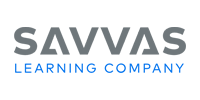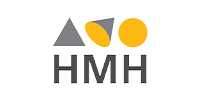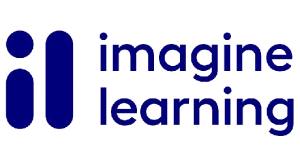
Why Do You Need This?
Continuing education and credentialing programs generate massive volumes of data, but fragmented systems limit your ability to act on it. We help continuing education teams modernize their data infrastructure, so they can:
- Spot at-risk learners sooner.
- Improve retention and learning outcomes.
- Meet compliance requirements with confidence.
- Demonstrate ROI and real-world program impact.
Who we work with
What We Deliver
From unified data platforms to predictive analytics, we equip education leaders with the infrastructure and intelligence to optimize programs at scale.
Connect SIS, LMS, CEU systems, assessments, and credentialing data in one
AI-ready platform.
- Built with Microsoft Fabric OneLake + Databricks Lakehouse.
- Works across Azure, AWS, or GCP.
- Compatible with Snowflake, Redshift, BigQuery, and custom stacks.
Give leaders, faculty, and advisors real-time visibility into what matters.
- Interactive visualizations built in Power BI.
- Visualize data from Databricks Delta tables.
- Track engagement, learning outcomes, and program effectiveness.
Use machine learning to support earlier interventions and more effective learning.
- Predictive models built in Databricks, deployed through Fabric pipelines.
- Early alerts for at-risk learners.
- Personalized learning path recommendations.
- Impact and program effectiveness tracking.
Create structured, governed data pipelines that integrate smoothly across systems.
- ETL frameworks using Fabric Dataflows and Databricks notebooks.
- Designed for repeatability, data integrity, and scalability.
- Automated metadata and transformation logic.
Secure, transparent, and aligned with education compliance standards.
- Role-based access controls via Unity Catalog.
- Audit trails, encryption, and consent tracking are built in.
- FERPA, HIPAA, and CEU compliance support.





Why Magic EdTech
We understand education technology inside and out and deliver solutions built to evolve with your programs.
Connect SIS, LMS, CEU, assessment, and credential data on Fabric + Databricks across clouds.
Power BI delivers real-time views from Delta tables for engagement, outcomes, and program effectiveness.
ML models via Fabric pipelines trigger early alerts and personalized paths to improve retention.
Unity Catalog RBAC, audit trails, encryption, and consent tracking support FERPA, HIPAA, and CEU requirements.




FAQs
Yes. The approach layers a governed warehouse over your existing systems and ingests feeds from SIS, LMS, CEU registries, assessment platforms, and credentialing tools. It’s designed to run on Microsoft Fabric + Databricks but remains cloud‑agnostic and compatible with Snowflake, Redshift, BigQuery, or mixed stacks. You keep the systems that work, while a common model, Delta/OneLake tables, and repeatable pipelines create a single source of truth for analytics and AI.
Each intake uses data contracts and automated checks (schema, nulls, ranges, dedupe). Transformations are version‑controlled, with lineage captured end‑to‑end (e.g., Unity Catalog/Delta lineage) and “certified” datasets published with refresh SLAs and audit logs, so every metric can be traced back to source.
Store SIS, LMS, CEU, and assessment data in open formats on cloud object storage, keep business logic in a semantic layer (shared views/metrics), and route all system connections through an API/middleware layer rather than point‑to‑point links. Add clear data contracts, centralized catalog/lineage, and role‑based access so new tools can onboard safely. Build declarative ELT pipelines with version control, automated tests, and CI/CD, and have dashboards query the semantic layer instead of tool‑specific extracts.
Yes, you can. The design is modular. Many teams begin with a single program, KPI set, or data domain (e.g., SIS+LMS) and then add CEU, credentialing, and assessment sources over time. Historical backfill and incremental loads allow you to expand coverage without disrupting current reporting. As needs grow, you can add predictive models and personalization features on the same foundation.
Models are developed with interpretable features, fairness checks, and drift monitoring. Thresholds are tuned with program stakeholders, and alerts are routed to humans—advisors, faculty, or support teams—for judgment and action. Regular re‑training and side‑by‑side performance reviews ensure the models remain accurate across cohorts and do not disadvantage specific learner groups.
LMS reports show course‑level activity; a unified warehouse connects the dots across systems and time. You’ll see cross‑platform engagement, CEU accumulation, credential lifecycle status, intervention impact, and program ROI in one view. Because the data model is standardized and governed, leaders, faculty, and advisors can self‑serve trusted metrics and drill from institution‑wide trends down to individual learner journeys—something a single platform’s native reports can’t provide.

Let’s Build a Smarter Data Strategy
Whether you’re launching a new program or scaling your offerings, we’ll help you turn your learning data into a strategic asset, secure, scalable, and AI-ready.










